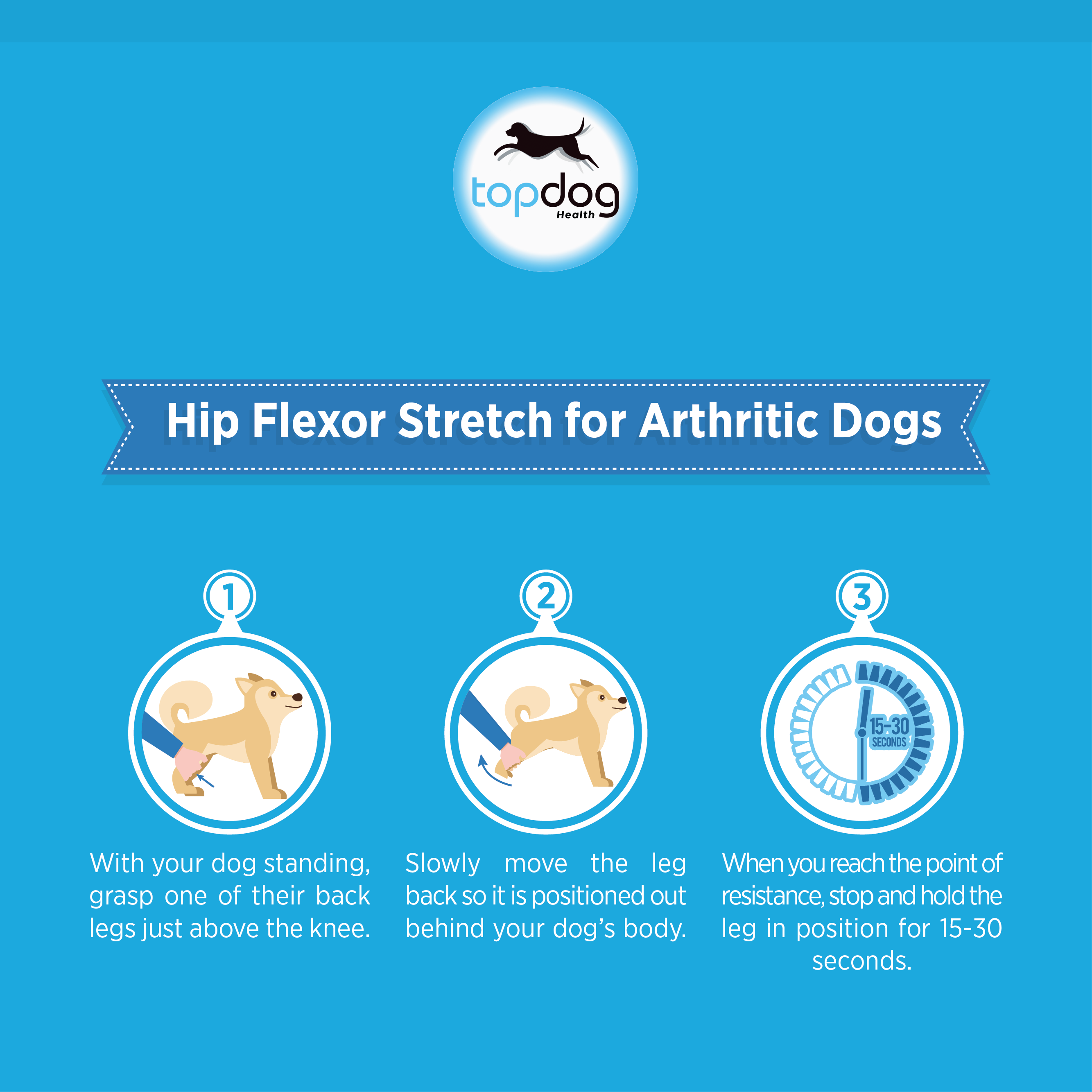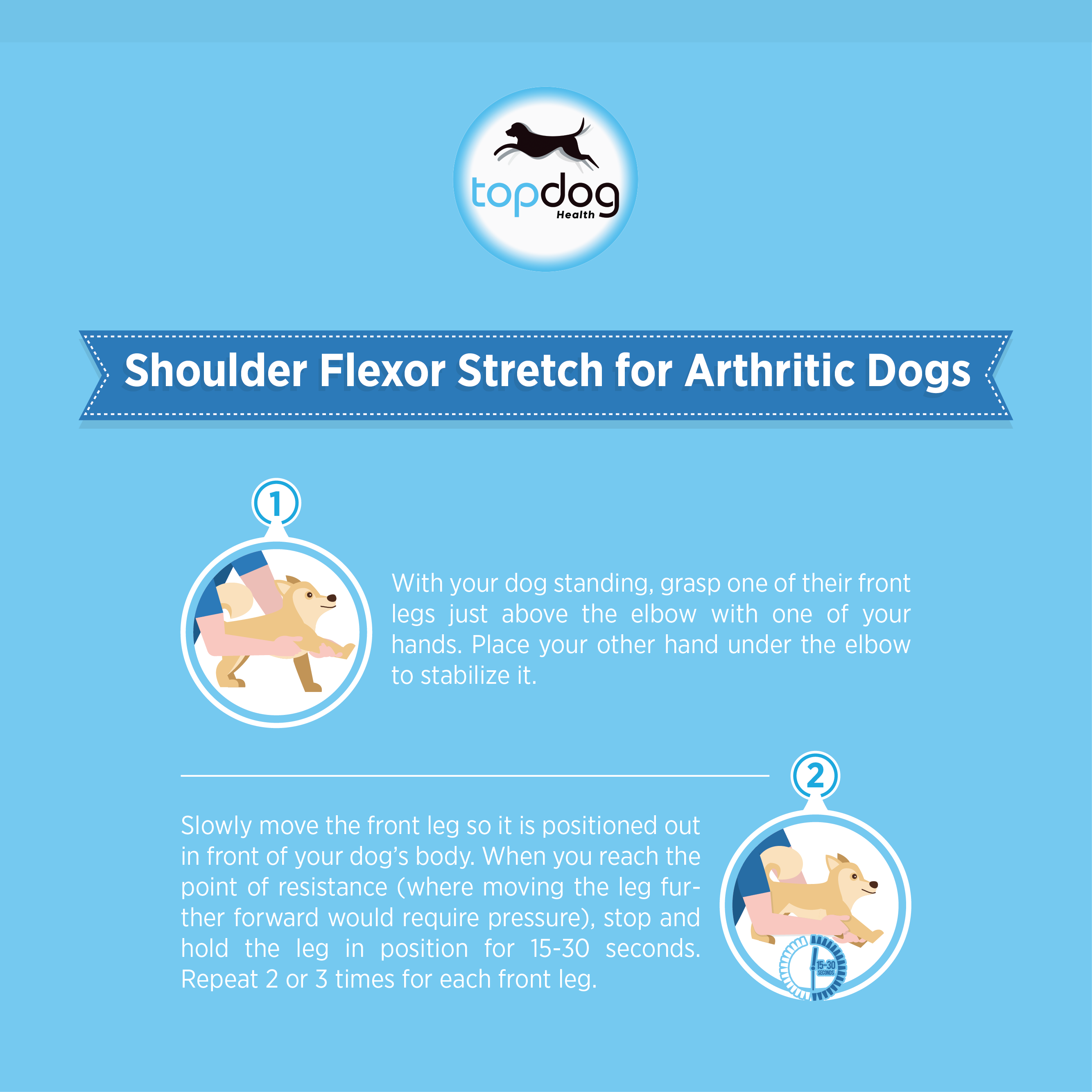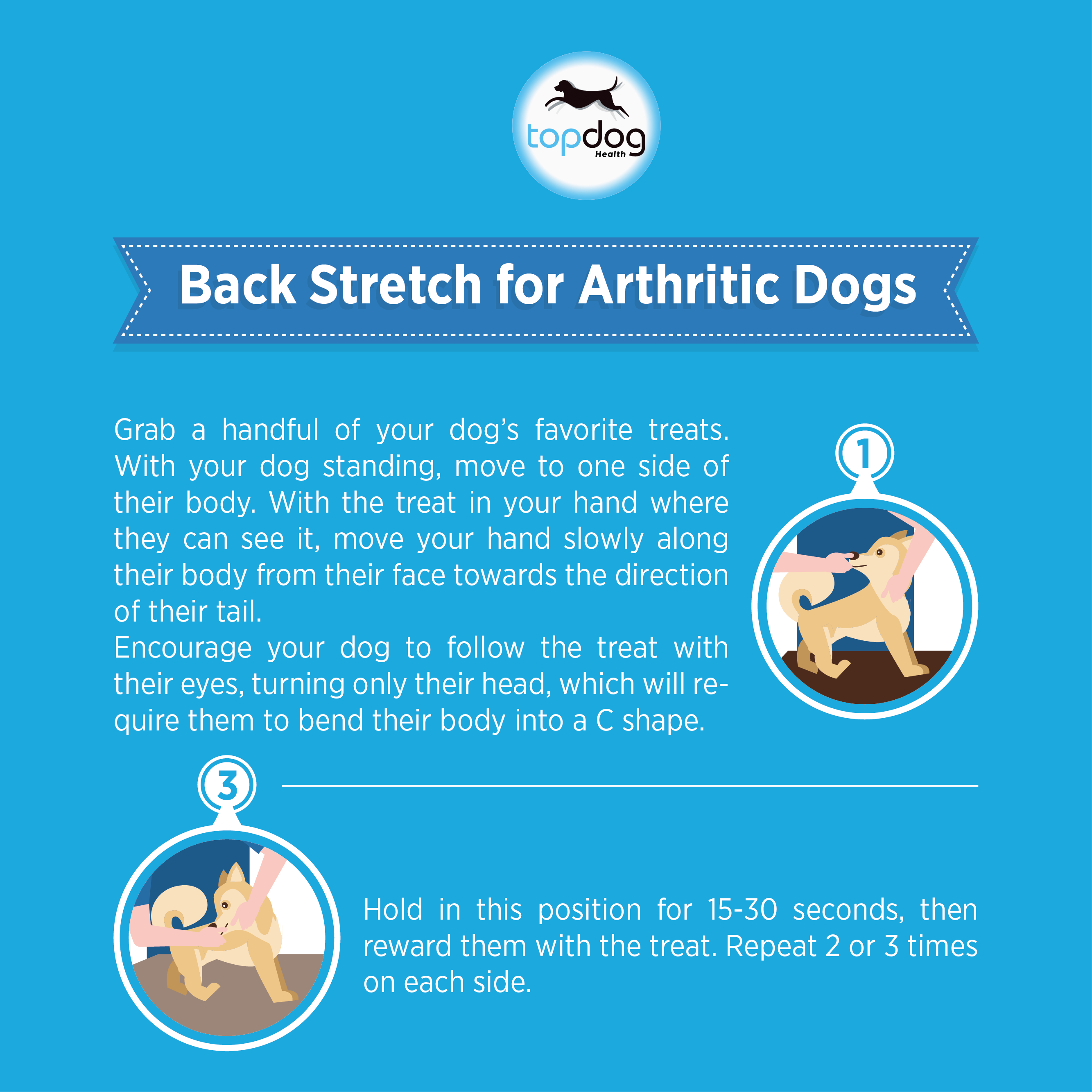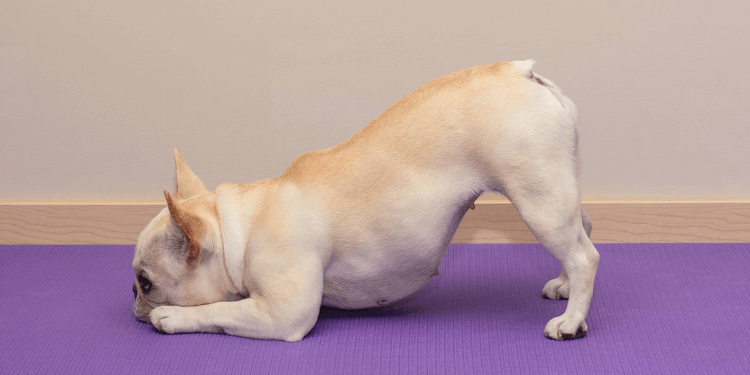If your dog is suffering from arthritis, you’re certainly not alone. Arthritis is one of the most common degenerative diseases I see in my canine patients. In fact, by the time a dog reaches 8 years of age, they have an 80% chance of having arthritis.
So the burning questions I hear from my patient’s parents are always this: What can I do about it? None of us like to see our beloved pets suffer, but luckily there is a simple (and free!) practice you can do with your pet right in the comfort of your own home to help minimize their joint pain and increase their mobility: stretching.
Tips for Stretch Success
Before we get into the actual exercises, here are my top tips to keep in mind for a successful stretching session with your dog:
- Consistency (rather than intensity) is key. Better a few minutes of stretching every day than a marathon session once a week.
- Always keep two words in mind: slowly and gently. Never stretch your dog too quickly or use jerking motions.
- Follow your dog’s lead. If they show any signs of discomfort or uneasiness, adjust your method accordingly.
- Always perform these stretches on your dog in a quiet place in which they feel comfortable.
The 3 Key Stretches: Hips, Shoulders, and Back
There are 3 areas of the body for which stretching is especially beneficial in arthritic dogs: the hips, shoulders, and back. The following are 3 of my favorite simple stretches you can do in just a few minutes each day, one for each key area.
#1: Hip Flexor Stretch for Arthritic Dogs
The Method:
- With your dog standing, grasp one of their back legs just above the knee.
- Slowly move the leg back so it is positioned out behind your dog’s body.
- When you reach the point of resistance (where moving the leg back further would require pressure), stop and hold the leg in position for 15-30 seconds.
- Repeat 2 or 3 times for each back leg.
The Results:
Consistent practice of this stretch will assist with increased mobility of the hips and spine, improved condition of the lower back, and decrease pain associated with arthritis.

#2: Shoulder Flexor Stretch for Arthritic Dogs
The Method:
- With your dog standing, grasp one of their front legs just above the elbow with one of your hands.
- Place your other hand under the elbow to stabilize it.
- Slowly move the front leg so it is positioned out in front of your dog’s body.
- When you reach the point of resistance (where moving the leg further forward would require pressure), stop and hold the leg in position for 15-30 seconds.
- Repeat 2 or 3 times for each front leg.
The Results:
Consistent practice of this stretch will improve the range of motion in the shoulders, chest, and upper back, increase breathing capacity and decrease pain associated with arthritis.

#3: Back Stretch for Arthritic Dogs
The Method:
- Grab a handful of your dog’s favorite training treats.
- With your dog standing, move to one side of their body.
- With the treat in your hand where they can see it, move your hand slowly along their body from their face towards the direction of their tail.
- Encourage your dog to follow the treat with their eyes, turning only their head, which will require them to bend their body into a C shape.
- Hold in this position for 15-30 seconds, then reward them with the treat.
- Repeat 2 or 3 times on each side.

The Results:
Consistent practice of this stretch will help improve mobility of the spine and decrease pain associated with arthritis.
Bonus Treat: Back and Sacrum Massage for Arthritic Dog
The Method:
- For an extra treat, your dog will love that also helps manage arthritis, perform a quick back and sacrum massage.
- Start at the sacrum – located at the base of the tail, between the hipbones. Using light pressure, move your hands in a gentle circular motion over this hard, flat surface.
- Proceed slowly and gently with the same motion up the length of your dog’s spine, using very little pressure when in direct contact with the spinal vertebrae.
The Results:
Consistent practice of this massage will help improve the flow of spinal fluid, increase mobility of the spine and hips, and decrease anxiety.
In Conclusion:
Remember: when it comes to stretching for your dog, consistency is key. As I tell all my clients, you are the biggest advocate for your pet’s health. In just a few minutes each day, you have the power to decrease your dog’s arthritis pain and greatly increase their quality of life.











